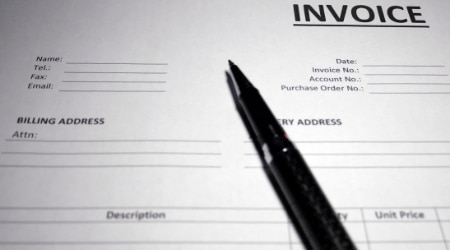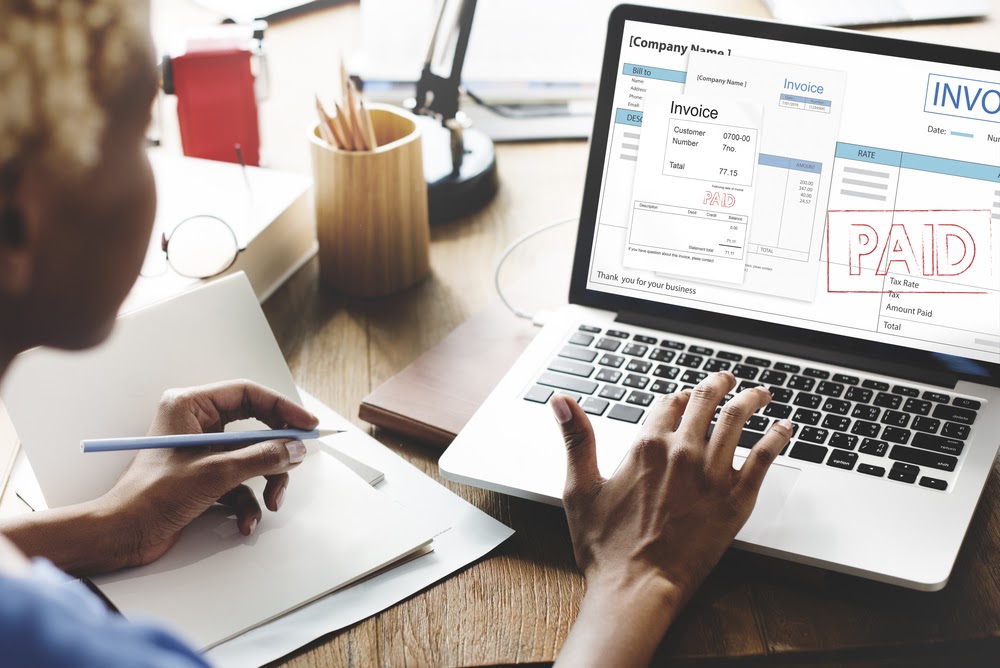What is an invoice payment?
When you need to request payment from a customer you’ll use an invoice payment, meaning it’s the money your customer sends to you, the supplier, for the products and services you’ve provided.
Every small business should have an efficient and consistent process for paying the invoices it receives from its suppliers. If they don’t, they risk incurring late payment fees and damaging the relationships they have with their suppliers.
How to make invoice payments on time
Late invoice payments can damage the cash flow of businesses and make it difficult for them to operate effectively, which is why it’s so important that businesses of every size take responsibility to pay their invoices on time.
Here are some simple steps you can take to pay your suppliers’ invoices promptly:
Review invoices as soon as you receive them
Reviewing invoices as soon as they’re received will make sure they don’t get forgotten or misplaced. You should pay close attention to the payment due date and ensure the total cost aligns with the conversations you’ve had with the supplier.
Set payment reminders to avoid late fees
You can easily create payment reminders with QuickBooks’ automated invoicing system to make sure the invoices you receive are paid on time. That will help you to avoid late payment interest charges and fees.
Choose the right payment method
The payment methods accepted by the supplier should be listed on the invoice. You should choose the most convenient payment method for you based on your current circumstances. For example, if cash flow is low, paying by credit card might be the best option. Or if the supplier is invoicing you regularly then options for recurring invoices like Direct Debit might save you both a good amount of time.
Automate invoice payments
If you need to pay a supplier on a regular basis, you can set up an automatic recurring payment with QuickBooks to ensure the payment is made before the deadline.
Make the most of early payment discounts
Some suppliers offer a discount on the total cost of an invoice if you pay within a certain timeframe. Taking advantage of those discounts when you can, will help to improve your profit margins over the longer term.
What are the common invoice payment methods?
When making an invoice payment, it’s worth spending a bit of time considering the advantages and disadvantages of different types of invoices . The common payment types include:
- Paying by cheque - This is a cheap but outdated and time-consuming payment method that can take your attention away from day-to-day tasks.
- Cash - Paying by cash should be avoided unless you’re making the payment in person. Cash payments can be lost or stolen and there’s no method of recourse.
- Online credit or debit card payment - This is a fast and secure method of payment, with reputable suppliers providing multiple layers of security to keep your personal data safe.
- Direct Debit - this is a safe and secure way to make recurring payments. You authorise your supplier to collect payment directly from your bank account. The payment amount and payment schedule can be fixed or variable making it pretty flexible.
- Bank transfers - Bank transfers are simple, quick, and free to send. All you need is a few details from your supplier to complete the transfer.
- Mobile payments - You can make online payments on the move using secure mobile apps, although you may have to pay a fee.
- Automatic bill payments - QuickBooks allows you to make recurring payments automatically. They’re fast and secure, but you do have to make sure there’s enough money in your account for the payment to be made.















